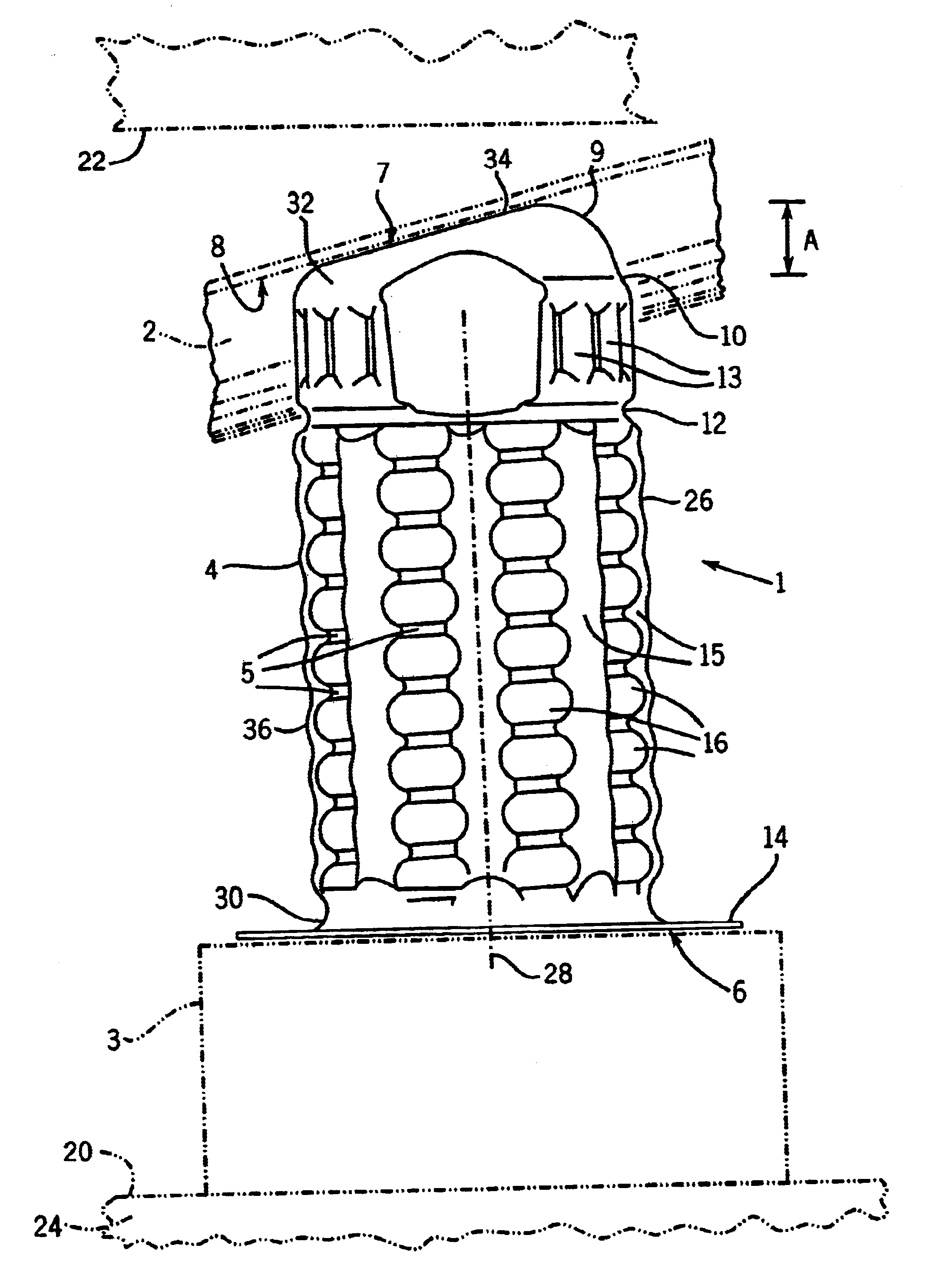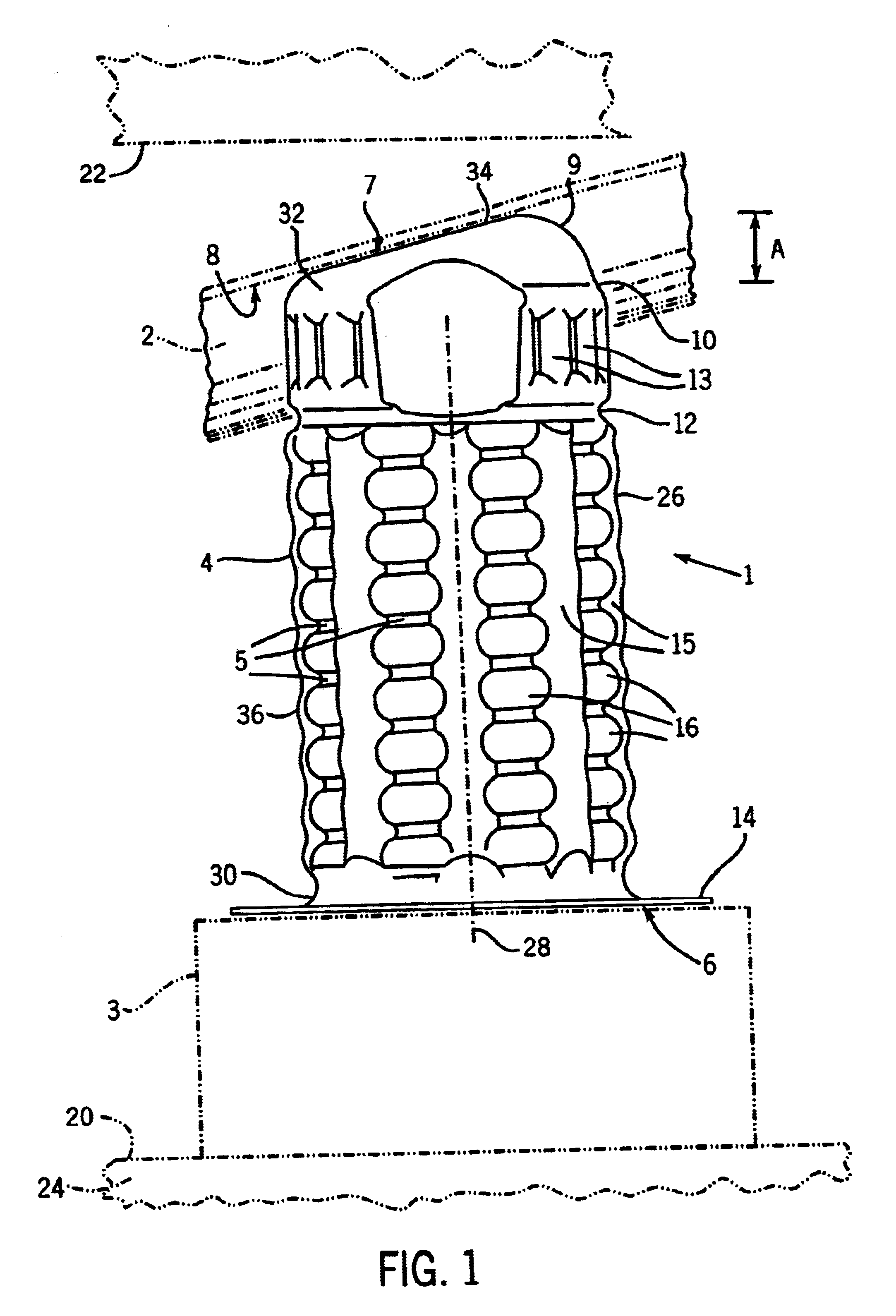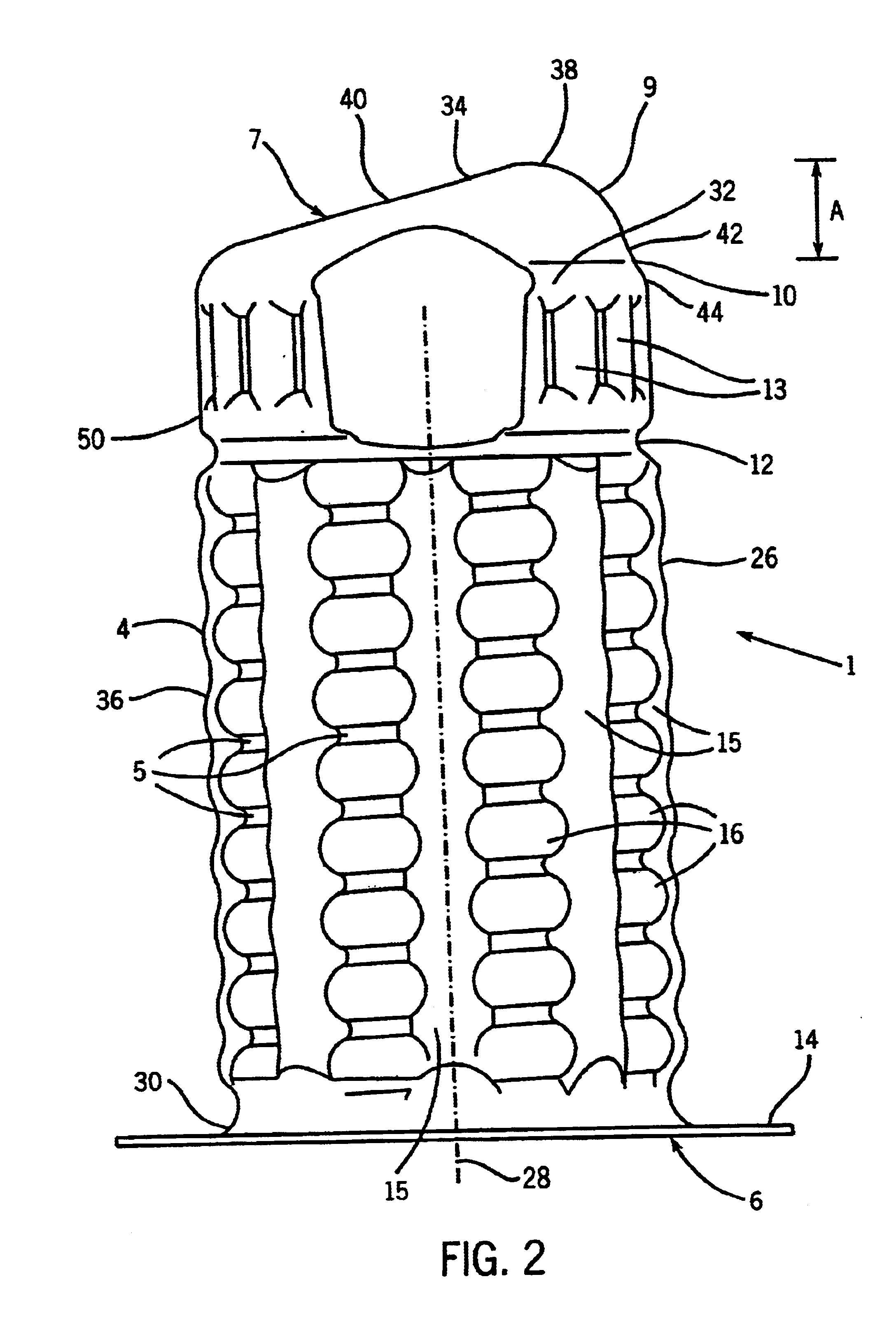Crash box collision damper for motor vehicle
a collision damper and box technology, applied in the direction of vibration dampers, superstructure connections, machine supports, etc., can solve the problems of insufficient force conductance through pins into the collision damper, the connection and the rigidity of the bumper cross member are not considered. optimal, the effect of the connection and the rigidity of the bumper cross member
- Summary
- Abstract
- Description
- Claims
- Application Information
AI Technical Summary
Benefits of technology
Problems solved by technology
Method used
Image
Examples
Embodiment Construction
As noted in the above general description, the collision damping arrangement 1, FIG. 1, is intended for use in motor vehicles for the purpose of energy absorption in the case of a collision of the vehicle 20 with an obstacle 22. The collision damping arrangement 1 may be arranged at various locations in the vehicle, such as front, rear, or the sides. The task of the collision damping arrangement is to absorb as much motion energy as possible during a collision and convert it into deformation work, so that damage to the passenger compartment 24 of the vehicle body is kept to a minimum. In FIG. 1, collision damping arrangement 1 is used for energy absorption in the case of a head-on collision of the vehicle with an obstacle. The collision damping arrangement includes crashbox damper member 26 arranged between front bumper cross member 2 and the vehicle longitudinal member 3 at the front side of the latter. Longitudinal member 3 extends in the longitudinal direction of the vehicle and ...
PUM
 Login to View More
Login to View More Abstract
Description
Claims
Application Information
 Login to View More
Login to View More - R&D
- Intellectual Property
- Life Sciences
- Materials
- Tech Scout
- Unparalleled Data Quality
- Higher Quality Content
- 60% Fewer Hallucinations
Browse by: Latest US Patents, China's latest patents, Technical Efficacy Thesaurus, Application Domain, Technology Topic, Popular Technical Reports.
© 2025 PatSnap. All rights reserved.Legal|Privacy policy|Modern Slavery Act Transparency Statement|Sitemap|About US| Contact US: help@patsnap.com



